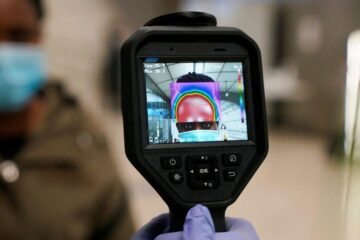The Role of Robots in Education

Robotic applications are gaining traction across places of work, homes, and educational institutions. Schools are now embracing robots to help in (Science, Technology, Engineering, and Mathematics) concepts.
The use of robots in schools will help ensure that children will know the value of robotics, STEM, and technology in the world. In addition, the growth of collaborative automation provides students with opportunities to gain robotic experience while in school.
Uses of Robots in Education System
The use of robots in education has been on the rise for quite some time now. They can improve student engagement, student-teacher interaction, and performance in STEM courses, among many other things.
Robots are a great way to teach children about technology and how it impacts their lives. They also provide a way for students to explore STEM topics that they may not otherwise have access for use. We should be open-minded about how robots can help our society. They offer a different way for people to learn while providing an exciting new perspective on the future.
Robotic helpers in the classroom are nothing new. Robots have been a part of many classrooms for years, from teaching basic math to helping kids with autism learn. Recently, robots have started taking on more complex tasks such as reading and writing on a chalkboard. They are also being used as teachers’ assistants to assist with grading papers and even help students learn to program early.
Robots have the potential to change the way we learn forever. They can engage students with interactive lessons by asking questions, creating quizzes, and making the learning process more fun. In addition, multimedia teaching aids in schools such as iPads pave the way to interactive robots capable of delivering lessons in various ways.
Robots are used to make the learning process more interactive and engaging. They can also take students’ questions, go on online searches, and report back the answer. Teachers employ the use of simulators and robotics to entice students in classrooms. Simulators are used in elementary, high school, and special education. Robotics have also shown success when dealing with students having special needs or disabilities.
Educational robots can be used in three ways: as a collaborative tool for teachers, as an interactive teaching aid, or as a remote teacher in under-served locations. Unfortunately, some believe that teachers won’t be needed once robots take over the teaching profession anymore.
Robots are proving to be a crucial part of the education system. They can provide an engaging and interactive learning experience for students that is otherwise not available in classrooms. They can help the students with their lessons, answer their questions and even teach them a new skill.
Robots in education help handle laboratory experiments that are harmful if accidentally come into contact with the body. Thus health and safety is achieved in school.
The Advantages of Robots in the Learning System
There has been a significant increase in the number of collaborative robots used in schools. They are introduced to various educational settings to support and complement human teachers.
Robots can provide valuable assistance to teachers and students in various ways such as:
- Providing knowledge about topics or languages that might not be available to students,
- Providing information on topics that are hard for students to understand,
- Enhancing the performance of students.
The benefits of robots in the education system are undeniable. They could solve the teacher shortage crisis and address the issue of cost-effectiveness. In addition, education robots can provide a more personalized and individualized learning experience for children to develop their skills and competencies in a way that suits them personally.
Education robots- “teaching machines” – can provide personalized, individualized, knowledge-based education at a fraction of the cost. Robots do not take sick days, vacations, or need maternity leave. As robots start to be a part of our everyday lives, more students will interact with them. Robots have the potential to become the leading device for digital education.
All learning content will be through virtual agents or robots soon. In addition, many schools are replacing textbooks with tablets and computers that can access online lectures from the school or other sources.
Robots are not meant to replace teachers in schools but rather supplement their knowledge with visual aids and lessons for students. Robots are becoming more and more common in education. From reading to students to teaching science lessons, robots are becoming an essential asset in classrooms.
The way we learn is rapidly changing. Robots allow teachers and students to work together on projects and assignments while still developing their skills individually. It also allows for hands-on learning that facilitates practical knowledge.
Robots are being used as instructional aides in many schools and universities to help students learn about science, math, and other subjects.
Educational Robots Trends
There is a need for technology to communicate socially. Therefore, the robotic market is going to invest heavily in the coming years. Machine learning and Artificial Intelligence in these robotic assistants have begun playing an even more significant role in education. They can now teach skills that require a high level of critical thinking, like writing essays or solving math problems. These AI-powered robots can even generate their lesson plans based on the student’s needs and level of understanding, replacing the need for humans to create these lessons.
Conclusion
Robots play an integral role in learning institutions by providing assistance in collecting information, developing new technologies, and teaching automation skills—robots in school-age light and compact such that they fit small labs.
Robots are becoming more and more popular in education and are often cheaper than a teacher or professor and can help teach students better because they can provide feedback.
Robots have influenced the education system for decades, but recent developments have allowed robots to be more efficient and interactive than ever before.
Education robots are affordable, flexible, and are of high quality. The flexibility of collaborative robot arms facilitates reprogramming and redeployment. Because of their lightweight, they can be mount on tables, carts, or desks.















